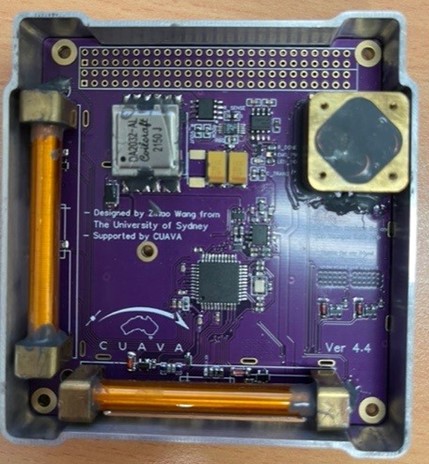CUAVA is excited to announce the delivery of the Electro Permanent Magnetorquer (EPM) payload, in preparation for integration into the CUAVA-2 Satellite, scheduled for launch in early 2024.
The Electro Permanent Magnetorquer is a CubeSat-ready magnetorquer designed by a team at the School of Aerospace, Mechanical and Mechatronic Engineering (AMME) at the University of Sydney. The team comprises of Zihao Wang, Xiaofeng Wu and Youngho Eun.
Unlike conventional magnetometers, the electro-permanent magnetorquer utilises hard magnetic materials at the core. A driving circuit is designed to alter the dipole moment of the magnetorquer. The experiments show that the electro-permanent magnetorquer can generate up to 1.2 Am2 dipole moment in either direction. The magnetorquer works in pulse mode to adjust the dipole moment, requiring maximum energy of around 0.75 Joule per pulse.






